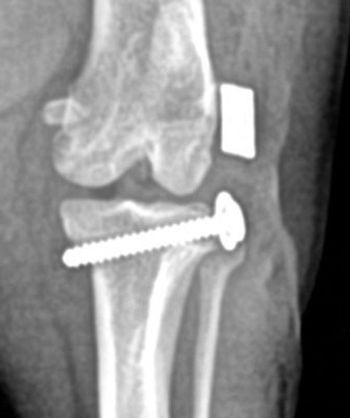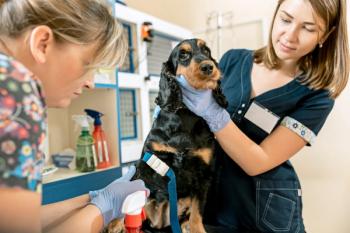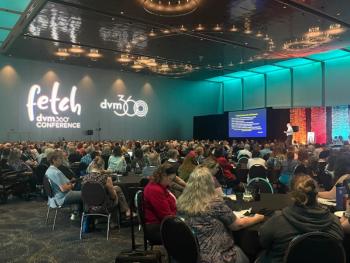
Case 8
The cornerstone of treatment in patients with hepatic lipidosis is nutrition, nutrition, nutrition. Misou is not eating enough on her own to maintain her daily caloric needs, and force feedings usually don't meet those requirements. Initial placement of a feeding tube will allow nutritional support to begin right away while the workup occurs. A nasoesophageal tube is a great way to start nutritional support in these patients since it is easy to place, does not require anesthesia, and is usually well-tolerated. Liquid veterinary recovery diets that are high in protein are ideal to use with a nasoesophageal tube. Blended canned diets, while great for patients with esophagostomy or gastrostomy tubes, will be too thick to use with a nasoesophageal tube.
Daily caloric requirements can be calculated based on the following formula:
RER (resting energy requirement) = 30 x (body weight in kg) + 70
This amount can then be introduced slowly, starting with 25% divided into four or five feedings per day. If the feedings are well-tolerated, then the amount can be increased by 25% the following day and so on until she is receiving her full caloric needs.
It is important to introduce food slowly in anorectic patients to prevent refeeding syndrome. This syndrome was first described in people with the liberation of Holocaust survivors during World War II. It was found that, after prolonged periods of anorexia, aggressive overfeeding leads to severe metabolic derangements that can be fatal. For example, as phosphorus and potassium shift back into the intracellular space, severely decreased serum phosphorus concentration can lead to hemolytic anemia. Typically, this is a concern once phosphorus concentration drops below 2 mg/dl and, at this point, requires parenteral supplementation. Potassium concentration should be monitored closely and supplemented as well. Ideally, phosphorus and potassium concentrations should be monitored daily in these patients for the first few days of feeding. It is also important to remember that liquid diets are 75% water, so reducing Misou's intravenous fluid rate may be indicated as her feedings increase.
QUESTION 4
Patients with hepatic lipidosis are often at risk for coagulation problems. What is the most likely reason for this?
<<
Newsletter
From exam room tips to practice management insights, get trusted veterinary news delivered straight to your inbox—subscribe to dvm360.





